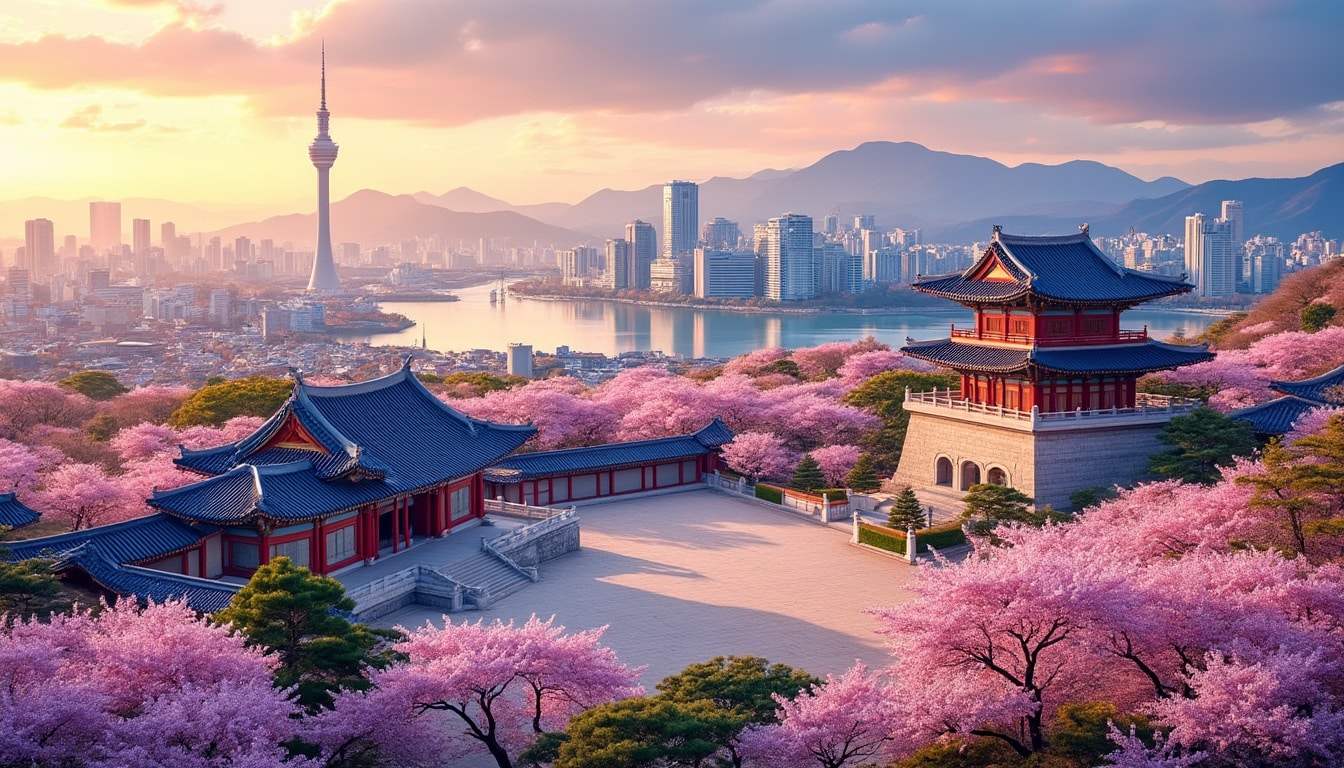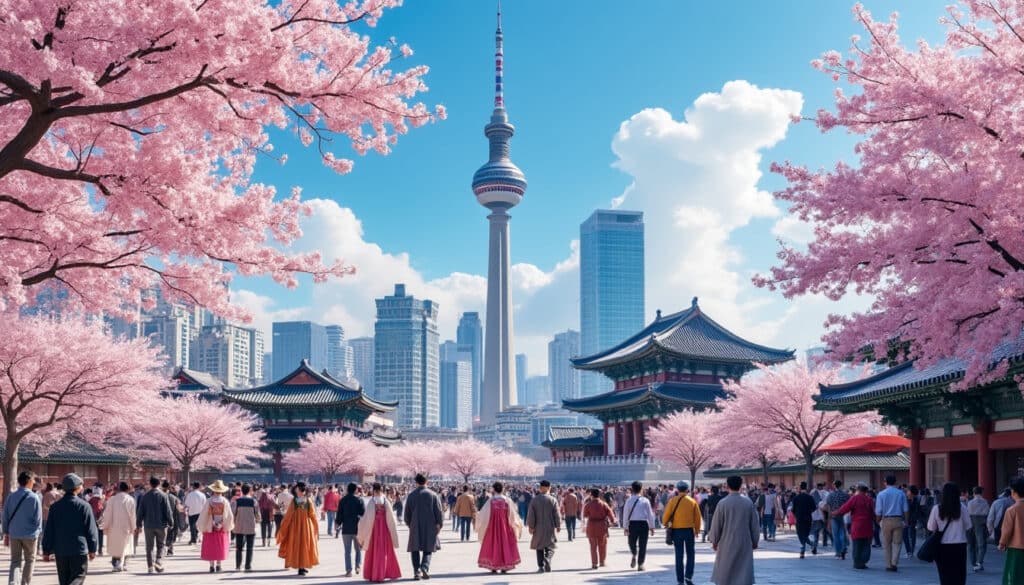Seoul, the bustling capital city of South Korea, boasts a rich history that stretches over 2,000 years. From its ancient beginnings during the Baekje Kingdom to its modern role as a global city, Seoul has played a pivotal role in political, economic, and cultural developments on the Korean Peninsula. This article explores the intriguing history of Seoul, detailing its significant periods, events, and landmarks that have shaped its identity over the centuries.
The Baekje Period: Foundations of Seoul
The origins of Seoul trace back to the year 18 BCE, during the time of the Baekje Kingdom, one of the three major kingdoms in ancient Korea. In this era, Seoul was known as Wiryeseong. The location was chosen strategically for its proximity to the Han River, which served as an essential conduit for defense and trade. The fertile river basin allowed the city to flourish as a center for commerce and agriculture. 🌾
The Han River, a critical geographical feature, provided access to both inland and coastal trade routes. It played a vital role in the city’s early growth, enabling the exchange of goods and fostering economic prosperity. Even in those early days, the area where modern Seoul now stands was a bustling hub of trade and communication.
As history unfolded, Seoul changed hands numerous times among the Three Kingdoms of Korea—Baekje, Goguryeo, and Silla. Such transitions highlight Seoul’s historical importance as a contested yet coveted asset in ancient Korean political struggles.
An interesting aspect of this period is how the balance of power shifted between these kingdoms. For instance, in 475 CE, control of Seoul shifted from Baekje to Goguryeo, and later, in 551 CE, back to Baekje. This tug-of-war exemplifies the significance of Seoul’s location in the heart of the Korean Peninsula. 🗺️
| Year | Event | Significance |
|---|---|---|
| 18 BCE | Founding of Wiryeseong | Establishment of Seoul by Baekje Kingdom |
| 475 CE | Control by Goguryeo | Shift of power within the Three Kingdoms |
| 551 CE | Return to Baekje | Reaffirmation of Baekje influence |
Additionally, the Han River’s significance went beyond trade and agriculture; it was a cultural and spiritual symbol as well. Rituals and ceremonies were often performed along its banks, reflecting its deep-rooted presence in the lives and beliefs of the ancient Koreans.
These layers of history, with their intricate political reforms and social dynamics, set the stage for Seoul’s development into a prominent city in subsequent Korean dynasties.
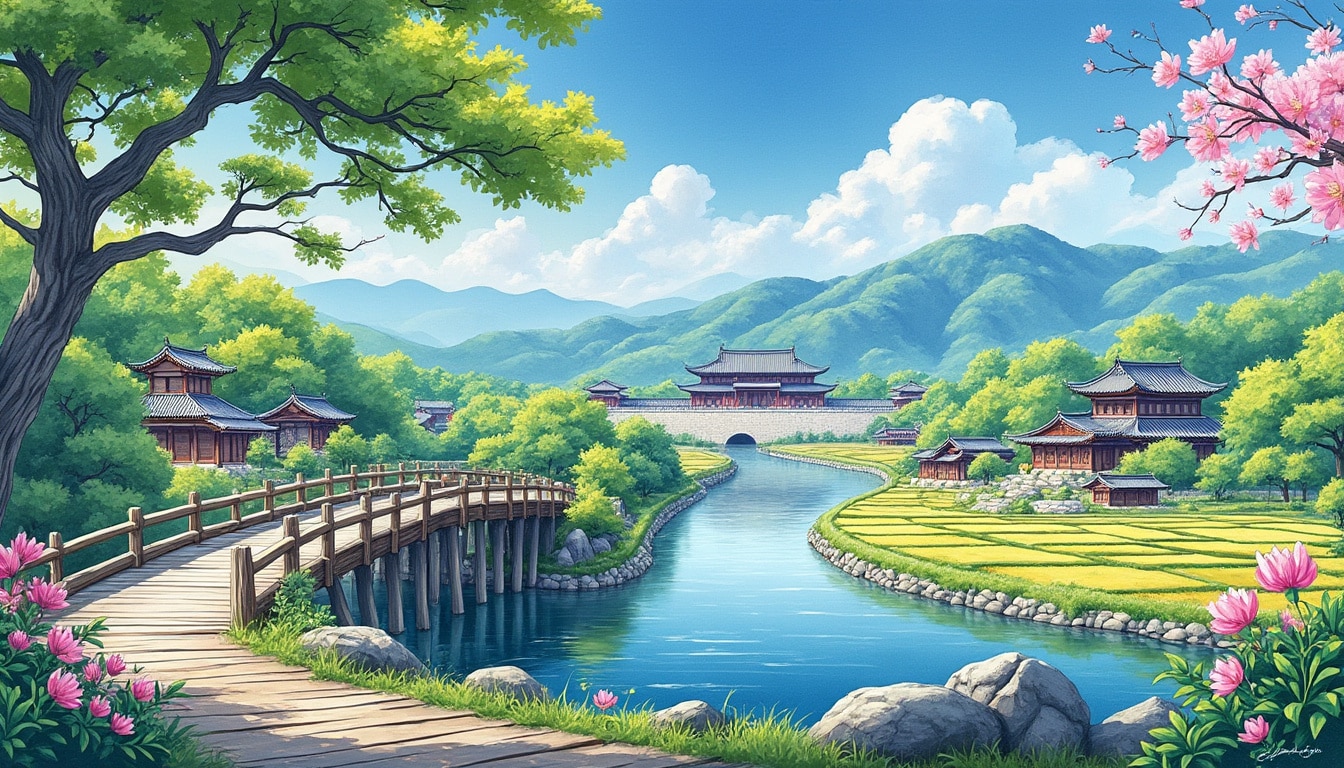
Seoul Under the Joseon Dynasty: The Capital’s Transformation
The transformation of Seoul into the capital of Korea was formalized during the Joseon Dynasty. In 1394, under the reign of King Taejo, Seoul was established as the capital of the new dynasty and was then called Hanseong. This marked the beginning of its rise as the political and cultural heart of Korea, a status it holds to this day.
Under Joseon’s rule, Seoul underwent extensive urban planning, epitomizing Confucian ideals. King Taejo ordered the construction of the Fortress Wall to protect the city from invaders. The wall, alongside mighty gates such as Gwanghwamun, was an architectural marvel that defined Seoul’s boundaries for centuries. 🏯
The Joseon period created an environment where Korean culture could thrive, particularly through Confucian learning. The city became a beacon for scholars, with institutions like Sungkyunkwan serving as centers for Confucian education and governance.
- 🏛️ Gyeongbokgung Palace, the primary residence of the royal family, was constructed in 1395.
- 📚 Numerous administrative buildings and palaces, such as Changgyeonggung and Changdeokgung, were built.
- 🔗 Architectural developments symbolized Seoul’s growth as a cultural and political hub.
The city’s strategic location on the Han River ensured its economic prosperity. Under the Joseon administration, Seoul rapidly developed into a commercial center where traders and merchants from across the peninsula convened. The Namdaemun Market, one of Korea’s oldest and largest markets, is a testament to the city’s thriving commercial activity during this period.
Despite frequent invasions and hardships, including the Japanese invasions of Korea (1592–1598) led by Toyotomi Hideyoshi, Seoul demonstrated remarkable resilience. The Manchu invasions of the 17th century also tested the city’s endurance, yet by the time of the Joseon recovery, Seoul had reaffirmed its role as Korea’s capital.
The Joseon Dynasty’s legacy in Seoul is still visible today, with cultural practices and structures carefully preserved. Understanding this era is critical to appreciating Seoul’s enduring influence and cultural continuity.
Japanese Occupation and Korean Empire: A Period of Change
In 1897, a significant shift occurred when Korea declared itself an empire under Emperor Gojong, heralding in the Korean Empire. Seoul was renamed Hanseong, marking its status as the imperial capital. Though short-lived, this period was marked by efforts to modernize Seoul with the adoption of Western technologies.
Seoul’s first electric streetcar system was installed in 1899, symbolizing the city’s leap into modernity. As foreign embassies were established, Seoul saw an influx of western influence that led to the construction of Seoul Station, enhancing the city’s connectivity.
However, in 1910, Korea was annexed by Imperial Japan, and Seoul was renamed Keijō. The occupation brought both modernization and hardship. While infrastructure improved, with developments like railroads and modern buildings, the Japanese authorities also imposed their rule harshly, dismantling many Korean cultural heritages.
- 🛤️ Introduction of railroads improved logistical capabilities.
- 🏛️ Japanese General Government buildings were constructed, showing dominance.
- 🎟️ Cultural events reflected changing times.
During the Japanese occupation, many Koreans resisted colonial rule. Seoul was the focal point of the independence movement, notably the March 1st Movement of 1919, which was a pivotal moment in the struggle for liberation.
The aftermath of World War II saw the end of Japanese control, but the liberation was bittersweet. With the Korean Peninsula divided into north and south, Seoul became the capital of South Korea, a role it continues to fulfill amidst contemporary political complexities, especially in relation to ongoing tensions with North Korea.
| Year | Event | Impact |
|---|---|---|
| 1897 | Declaration of Korean Empire | Attempted modernization of Seoul |
| 1910 | Annexation by Japan | Colonial infrastructure and cultural repression |
| 1919 | March 1st Movement | Heightened independence efforts |
This period of Seoul’s history is a testament to the city’s resilience and ability to transform challenges into growth opportunities, paving the way for its role as a modern metropolis.
Reconstruction and Growth: The Miracle on the Han River
Following the devastation of the Korean War, Seoul embarked on a journey of intense rebuilding and modernization. The early 1960s marked the beginning of what many call the “Miracle on the Han River,” a time when Seoul emerged from the ashes of war to become a global megacity.
The South Korean government, along with significant international aid, spearheaded Seoul’s redevelopment. Industrious efforts led to rapid urbanization and industrialization, with the construction of high-rise buildings, six-lane highways, and modern transportation systems. 🚄
Companies like Samsung, LG, Hyundai, and KIA set up headquarters in Seoul, driving its economic boom. The city’s population surged, and by the 1980s, Seoul was officially recognized as a megacity due to its explosive populous.
- 🏭 The 1960s and 1970s focused on foundational industries.
- 🌆 The 1980s highlighted Seoul’s rise as a business hub.
- 📈 Population growth exemplified urban expansion challenges.
With economic prosperity came cultural revival. The 1988 Summer Olympics put Seoul on the global stage, showcasing South Korea’s economic miracle and solidifying its place in international circles.
The technology and innovation boom of the 21st century has positioned Seoul as a leader in smart city initiatives. SK Telecom and other tech giants have contributed to Seoul’s status as a highly connected urban space, favoring widespread internet access and digital infrastructure.
Seoul’s transformation post-war demonstrates the city’s resilience and adaptability, symbolizing hope and progress. This era illustrates how strategic planning and collaboration can transform a city’s destiny, providing a template for urban development globally.
Modern Seoul: A Center of Tradition and Innovation
As we embrace 2025, Seoul continues its journey as a city that elegantly balances tradition and innovation. The capital has become synonymous with the Korean Wave, or Hallyu, promoting Korean culture worldwide through music, television, and film, with companies like CJ Group and Amorepacific at the forefront of the cultural industry.
Seoul is home to iconic cultural landmarks like the Dongdaemun Design Plaza and the restored Gyeongbokgung Palace. These sites stand as a reminder of the city’s historical pride and forward-thinking spirit. 🏙️
- 🎶 K-pop and K-dramas have established Seoul as a cultural powerhouse.
- 📚 Historical restoration projects maintain Seoul’s rich cultural heritage.
- 👥 Tourism thrives as Seoul attracts millions each year.
Politically, Seoul remains the epicenter of South Korean democracy, with the National Assembly and the Blue House anchoring the city’s governance. In terms of diplomatic and economic influence, Seoul plays a vital role, especially given its proximity to North Korea.
| Aspect | Description | Highlights |
|---|---|---|
| Cultural Influence | K-pop, Hallyu | Global entertainment impact |
| Political Centre | National Assembly, Blue House | Democratic governance |
| Tech and Innovation | Smart city, internet access | Leader in digital infrastructure |
The symbiosis of Seoul’s historical roots and its vision for the future continues to inspire urban planners and cultures worldwide. As it evolves, Seoul retains its dual identity, serving as a testament to the past and a beacon of what’s possible in urban innovation.
FAQ
- What is the significance of the Han River in Seoul’s history? 🌊
The Han River was crucial for trade and defense in ancient Seoul, facilitating commerce and enabling the city’s early growth. - How did the Joseon Dynasty influence Seoul’s development? 🏰
The Joseon Dynasty established Seoul as Korea’s capital, enriching its cultural and political stature through Confucian governance and architectural expansions. - What role did Seoul play during the Japanese Occupation? 🗾
Seoul was central to the independence movement during Japanese rule, symbolizing resistance and resilience while modernizing under colonial infrastructure. - How did Seoul transform post-Korean War? 🏗️
After the war, Seoul rapidly industrialized, becoming an economic powerhouse and globally renowned megacity through strategic urban development. - What makes modern Seoul unique? 🌆
Modern Seoul harmonizes traditional heritage with cutting-edge technology, epitomizing cultural richness and innovation.
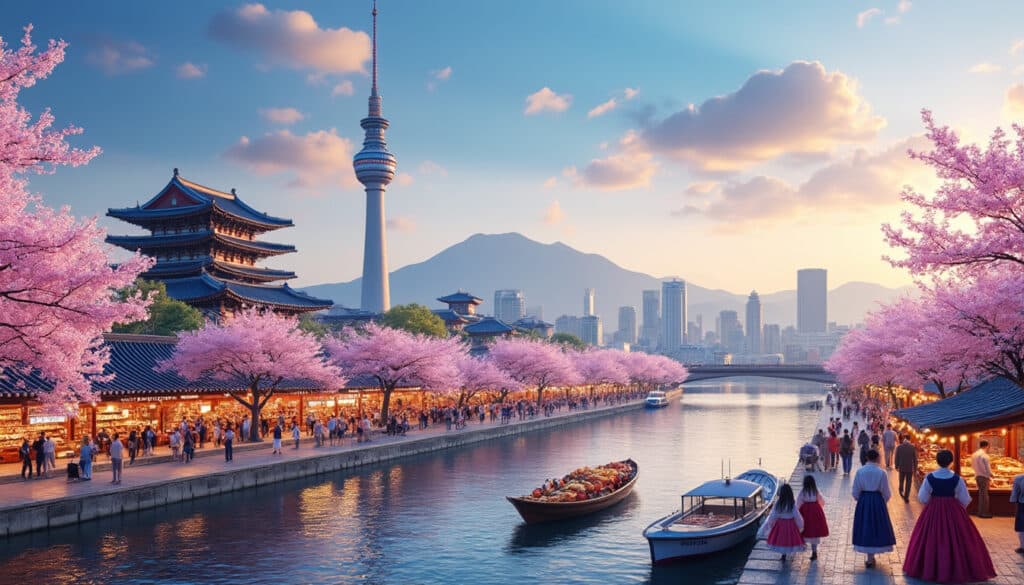
Fun Facts & Curiosities About Seoul
Seoul, a dazzling fusion of modernity and tradition, captivates every visitor with its vibrant blend of history, culture, and innovation. From being a technological metropolis to a cultural capital, the city offers a myriad of interesting facets waiting to be…
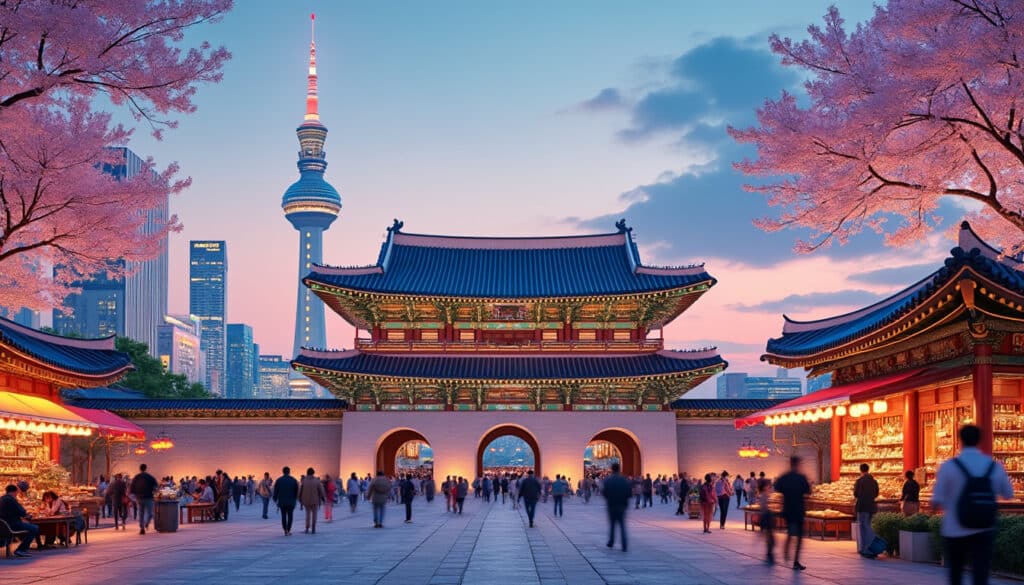
Architecture and urban features of Seoul
Seoul, South Korea’s vibrant capital, stands as a dynamic fusion of traditional culture and modern innovation. The city’s architectural wonders are a testament to its rich history and cutting-edge design principles, weaving a tapestry where ancient palaces coexist with towering…
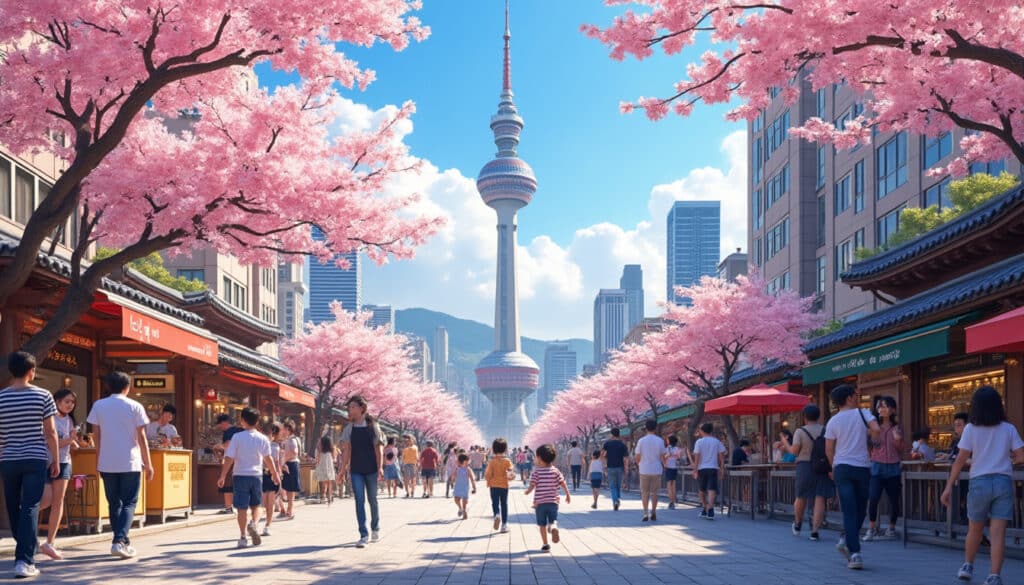
Seoul is a bustling metropolis where the ancient and modern coexist harmoniously. From its rich history rooted in time-honored traditions to its vibrant nightlife and technological advancements, this city is a haven for both tourists and expats. Stepping into Seoul…

Demographics and geography of Seoul
Seoul, the vibrant capital of South Korea, stands as a testament to the country’s rapid development and cultural evolution. Nestled along the banks of the Han River in the northwestern corridor of the Penninsula, Seoul represents a harmonious blend of…
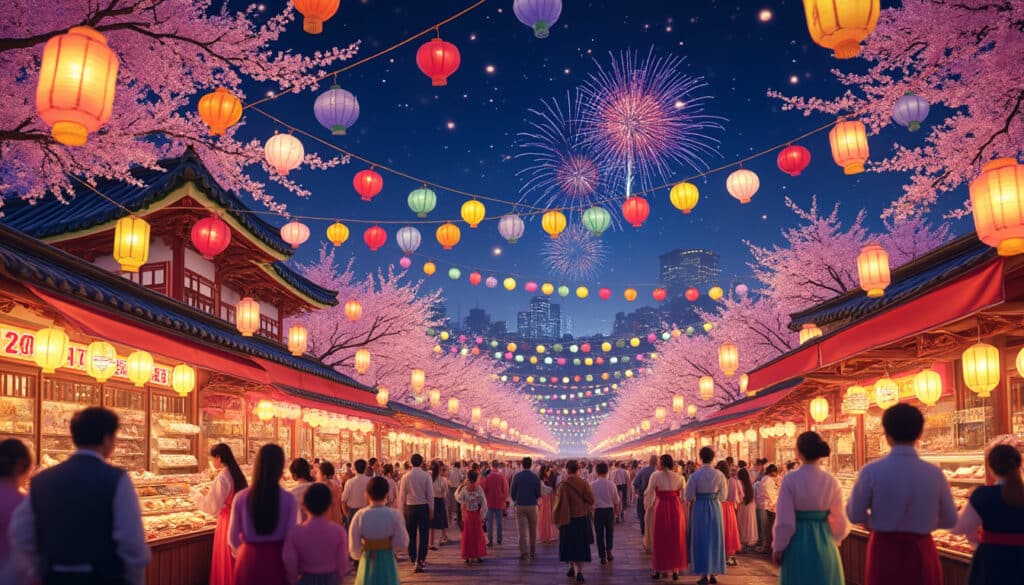
Holidays and celebrations in Seoul
Seoul, the heart of South Korea, is where traditions meet modernity, creating a unique tapestry of cultural and contemporary celebrations. The city, known for its vibrant lifestyle and rich history, transforms into a festive wonderland during public holidays. From historical…
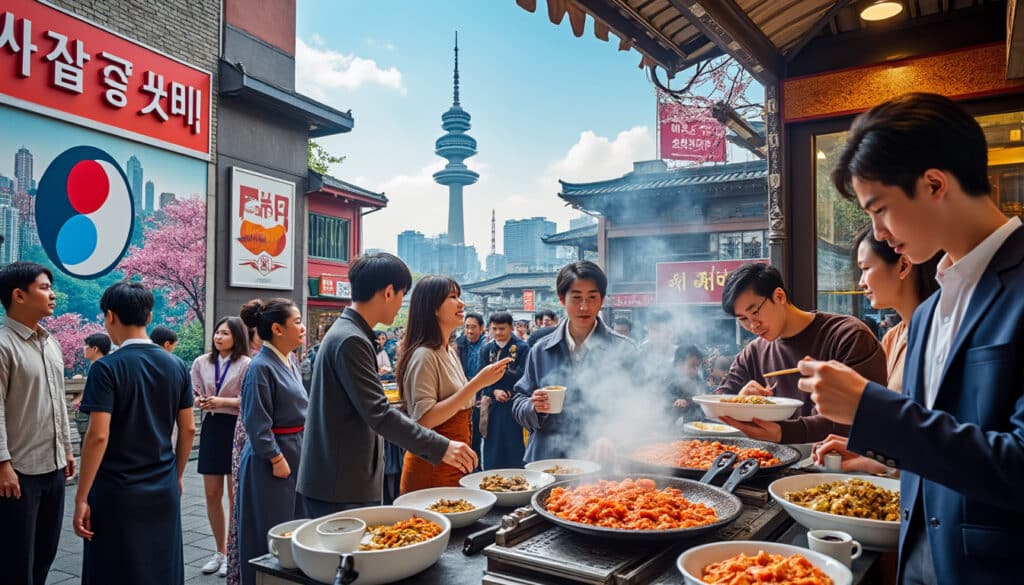
Language and spelling of Seoul
Seoul, the bustling capital city of South Korea, is not just a hub of rapid technological advancements and modern culture, but also a treasure trove of linguistic history and evolution. The city’s language and spelling conventions offer a window into…
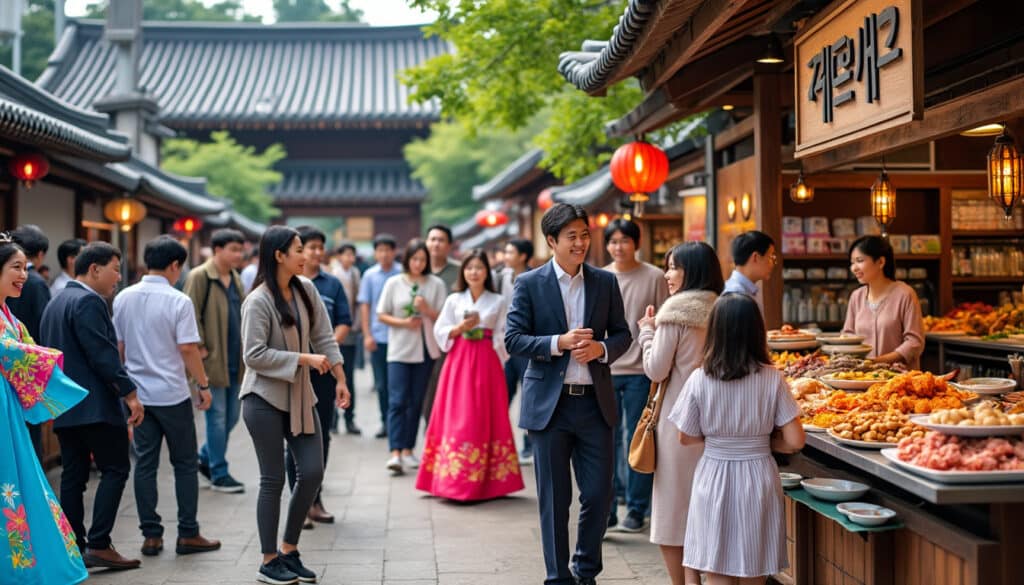
Local tips for tourists in Seoul
Seoul, the vibrant capital of South Korea, offers a fusion of ultra-modern skyscrapers and ancient palaces, bustling markets, and serene temples. However, while embarking on a journey to this dynamic metropolis, tourists often miss the oddly charming, unconventional spots that…
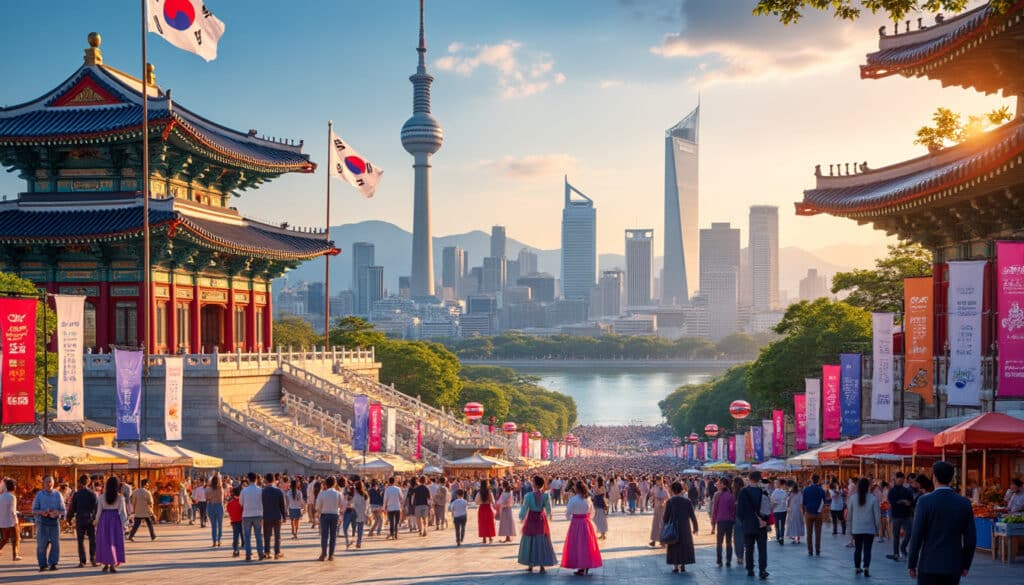
Names, flags, and identity of Seoul
Seoul, a dazzling city that serves as the heart of South Korea, has more to offer than its bustling streets, futuristic skyscrapers, and vibrant culture. Its essence is interwoven with the intriguing tapestry of its names, symbols, and identity. The…
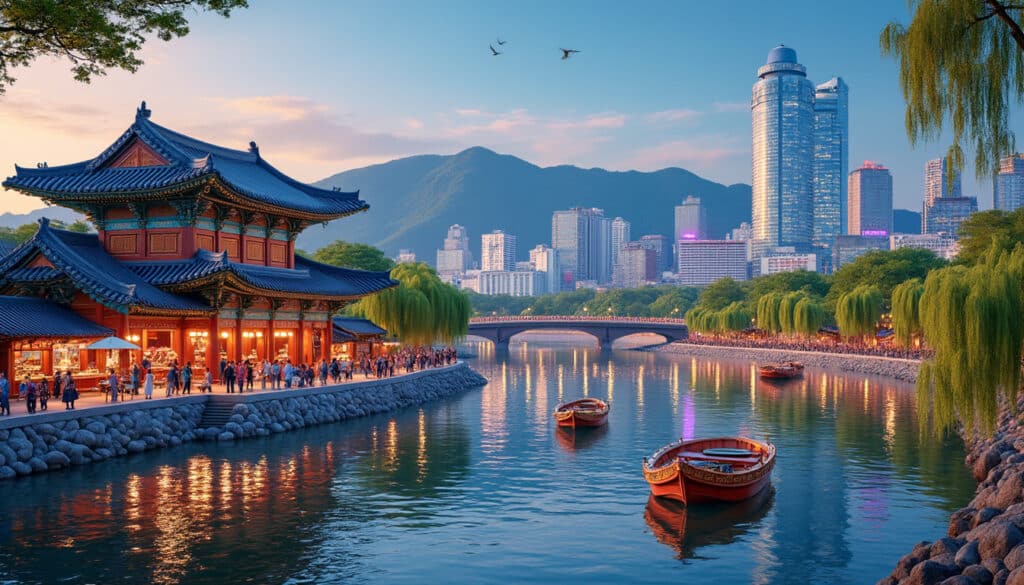
Reputation and identity of Seoul
Seoul, the pulsating heart of South Korea, is a city that gracefully bridges the gap between the past and the future. Known for its towering skyscrapers, neon-lit streets, and a burgeoning tech industry alongside historic palaces, tranquil temples, and bustling…
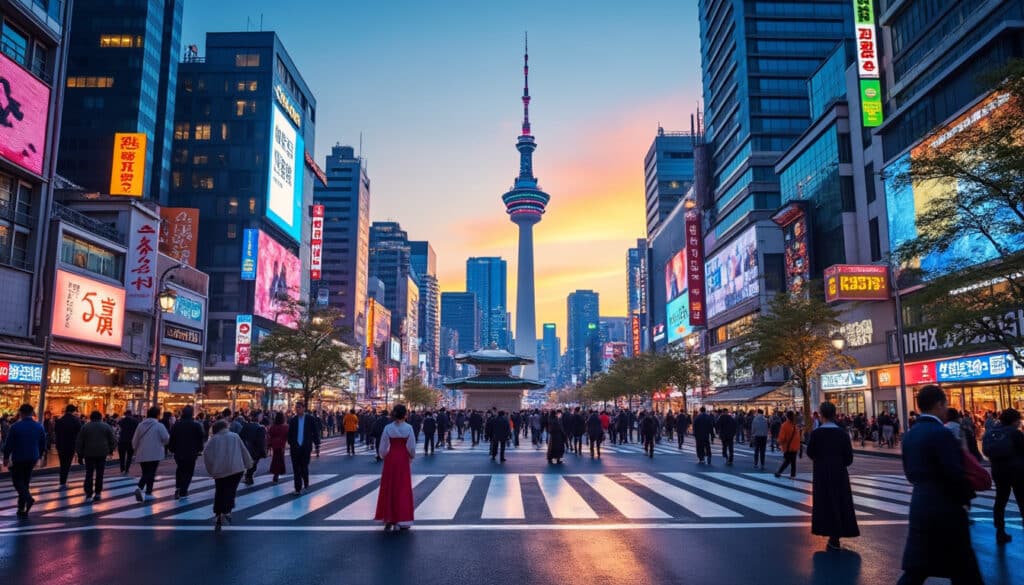
Seoul, a sprawling city that seldom sleeps, is a vibrant blend of tradition and modernity, pulsing with energy around the clock. Understanding time in this bustling metropolis is crucial for both residents and visitors, not only for practical planning but…
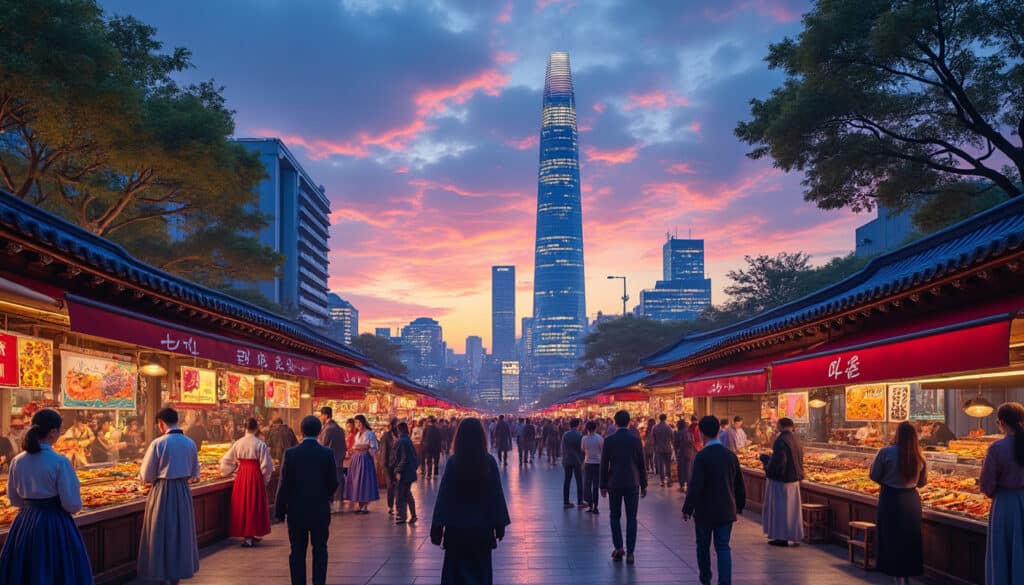
Unusual facts and social issues in Seoul
Seoul, a dazzling tapestry of ancient history and contemporary vibrance, offers explorers an eclectic mix of the unexpected and the familiar. As a hub of innovation with deep cultural roots, Seoul embodies a fascinating blend of contrasts that draw millions…
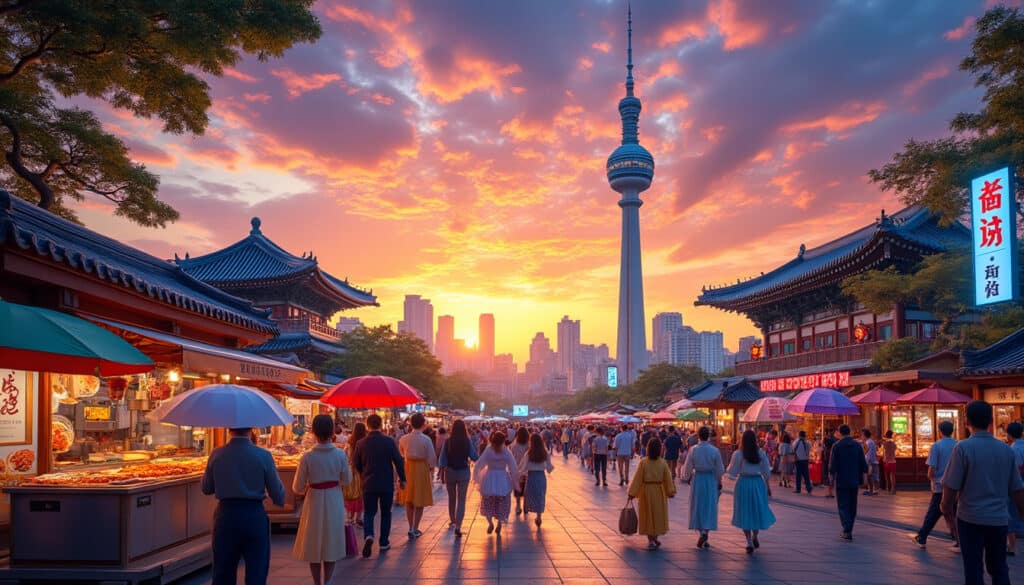
What does Seoul look, smell, feel like?
Seoul, South Korea’s sprawling metropolis, is a city that engages all the senses. As you navigate its bustling streets, you’re enveloped by a panorama of contrasting elements: sleek skyscrapers shoot up next to ancient palaces, neon-lit alleyways buzz with life…

